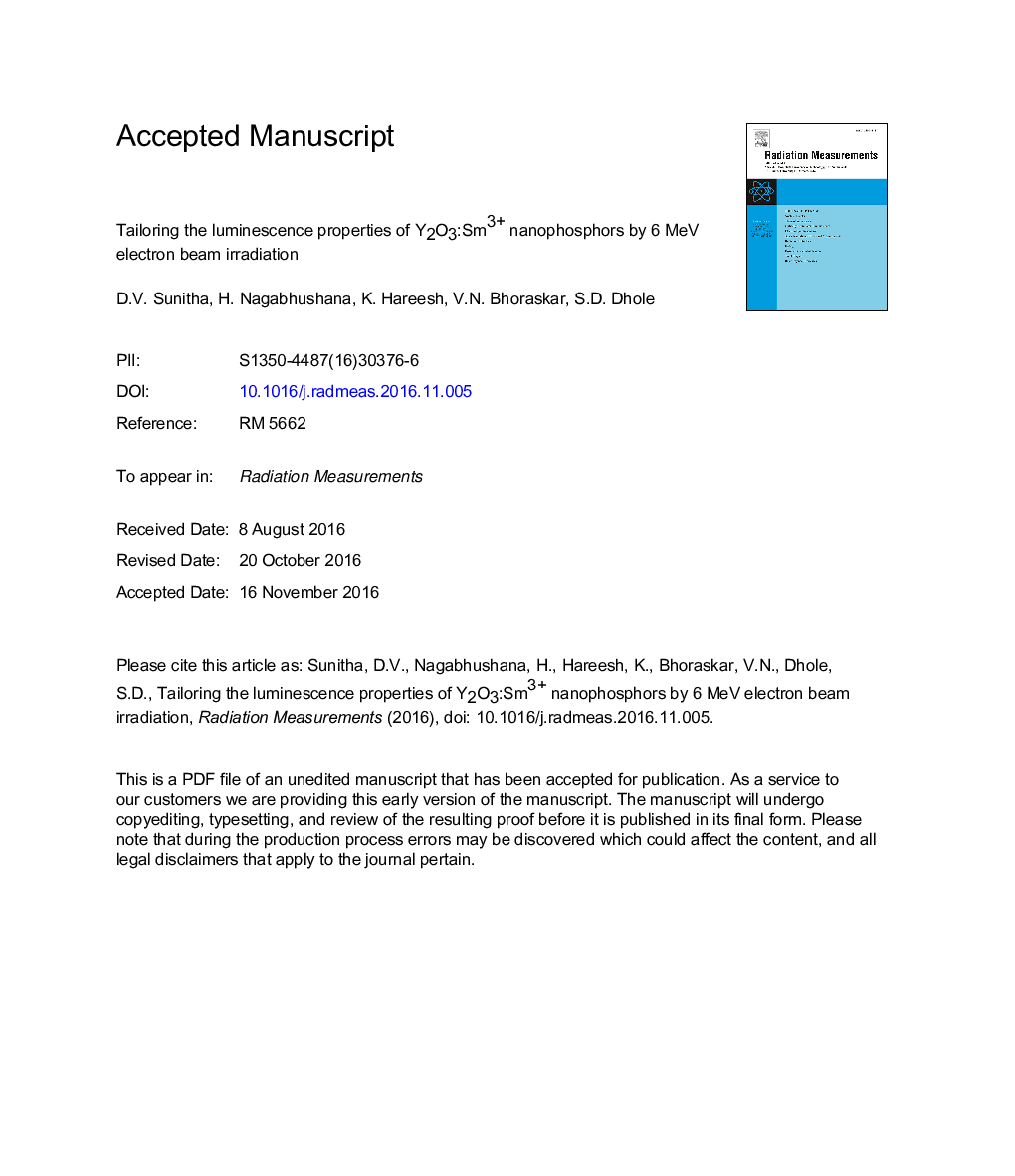| Article ID | Journal | Published Year | Pages | File Type |
|---|---|---|---|---|
| 5498892 | Radiation Measurements | 2017 | 33 Pages |
Abstract
Sm3+ (3 mol%) ions doped Y2O3 nanophosphors were synthesized by green synthesis route using Aloe Vera gel as fuel. The final product was irradiated by 6 MeV electron beam (E-beam) to different fluences in the range (2-10 Ã 1013 eâ cmâ2) and well characterized. Powder X-ray Diffractogram (PXRD) results revealed the loss of crystalline nature due to lattice disorder created during irradiation. Fourier Transform Infrared (FTIR) spectroscopic results showed absorption peaks around 688-843 cmâ1 (Y-O bond), 1076 and 1398 cmâ1 (C-O bond), 1505-1765 cmâ1 and 3498 cmâ1 (O-H bond). Scanning Electron Microscopic (SEM) images showed flake like morphological features. The Photoluminescence (PL) emission spectrum recorded at 407 nm excitation showed magnetic and electric dipole transitions at â¼569-575 (4G5/2 â 6H5/2), â¼607-623 (4G5/2 â 6H7/2) and â¼655-668 nm (4G5/2 â 6H9/2) respectively. Thermoluminescence (TL) glow curve consists of three peaks in E-beam irradiated nanophosphors at 158, 243 and 352 °C due to creation of more number of trapping and luminescent centers. The E-beam irradiated Y2O3:Sm3+ nanophosphors showed strong PL emission with color co-ordinate values lying in the orange-red region. Therefore, this material can be potentially used as a red component in WLEDs (White LEDs).
Related Topics
Physical Sciences and Engineering
Physics and Astronomy
Radiation
Authors
D.V. Sunitha, H. Nagabhushana, K. Hareesh, V.N. Bhoraskar, S.D. Dhole,
